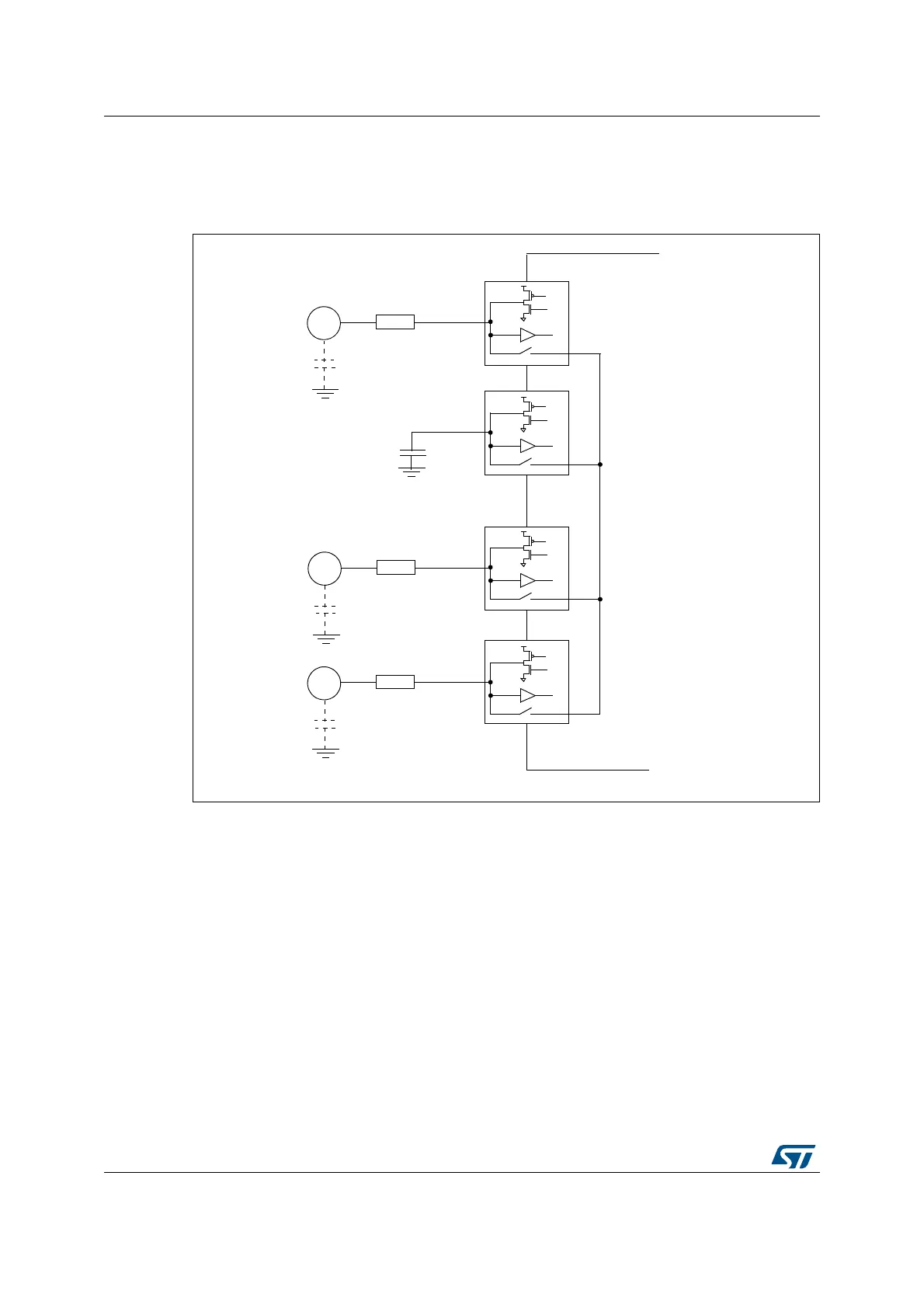Touch sensing controller (TSC) RM0351
790/1830 DocID024597 Rev 5
The remaining GPIOs are dedicated to the electrodes and are commonly called channels.
For some specific needs (such as proximity detection), it is possible to simultaneously
enable more than one channel per analog I/O group.
Figure 184. Surface charge transfer analog I/O group structure
Note: Gx_IOy where x is the analog I/O group number and y the GPIO number within the selected
group.
The surface charge transfer acquisition principle consists of charging an electrode
capacitance (C
X
) and transferring a part of the accumulated charge into a sampling
capacitor (C
S
). This sequence is repeated until the voltage across C
S
reaches a given
threshold (V
IH
in our case). The number of charge transfers required to reach the threshold
is a direct representation of the size of the electrode capacitance.
The Table 166 details the charge transfer acquisition sequence of the capacitive sensing
channel 1. States 3 to 7 are repeated until the voltage across C
S
reaches the given
threshold. The same sequence applies to the acquisition of the other channels. The
electrode serial resistor R
S
improves the ESD immunity of the solution.
-36
#
8
'?)/
2
3
#
8
'?)/
2
3
#
8
'?)/
2
3
'?)/
#
3
!NALOG
)/GROUP
%LECTRODE
%LECTRODE
%LECTRODE

